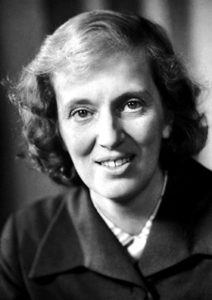 Originally published in the ebook A Passion for Science: Stories of Discovery and Invention.
Originally published in the ebook A Passion for Science: Stories of Discovery and Invention.
by Georgina Ferry
Dorothy Crowfoot Hodgkin, who began the research that made her world-famous at the Oxford University Museum of Natural History, is the only British woman ever to have won a Nobel Prize for science. Not only was she a great scientist, but she attracted widespread admiration for her devotion to the cause of world peace and for her efforts to promote science and education in the developing world. At the same time, long before it was commonplace for women to work after marriage, she supported her husband in his own demanding career and brought up three children.
Dorothy dedicated her working life to finding the structures of medically important natural chemicals such as antibiotics, vitamins, and proteins. The activity of these chemicals in the body depends on the way the tens, hundreds or even thousands of atoms in each molecule are connected in a precise three-dimensional arrangement. By firing a beam of X-rays through a pure crystal of the substance and catching the scattered rays as spots on photographic film, it is possible, with careful measuring of the spots and complex mathematics, to reconstruct the positions of the atoms.
She was one of the first to use this technique, X-ray crystallography, to reveal the structure of complex biological molecules. In 1945 she solved the structure of penicillin, the first of an ever-growing family of antibiotics used to treat bacterial infections. Her next major success was Vitamin B12, used to treat pernicious anaemia, which she solved in 1955. Her crowning achievement was the solution of the structure of insulin, the hormone used to treat diabetics, in 1969. She was awarded the Nobel Prize for Chemistry in 1964. The only other women to have won this prize at the time were Marie Curie and her daughter, Irène Joliot-Curie.
Hodgkin was born Dorothy Mary Crowfoot in Cairo on 12 May 1910. Her father John was in the Education Service in Egypt and later in the Sudan; he was also an archaeologist. Her mother Molly had no formal education but worked with her husband on archaeological sites. She became an authority on traditional weaving techniques and ancient textiles. Throughout much of their childhood, Dorothy and her three sisters remained in England with friends or relatives while their parents were abroad for most of the year.
The roots of Dorothy’s scientific dedication lie in her childhood. She first learned chemistry from a governess who taught her in a small group when she was 10 years old. It fascinated her, and she immediately started to do experiments at home. She successfully fought to be allowed to do chemistry — then seen as a “boys’ subject” — at secondary school, and in 1928 she was accepted to read chemistry at Somerville College, Oxford. She obtained a first-class degree and went to Cambridge to study for a PhD with JD Bernal. Bernal, a brilliant crystallographer and campaigning left-wing thinker, had begun crystallographic work on biological molecules such as sterols, which include cholesterol and vitamin D. He was the first to take a successful X-ray photograph of a protein, the digestive enzyme pepsin, and Dorothy worked closely with him on this and other projects.
In 1934 Dorothy returned to Oxford. Somerville College had given her a research fellowship, and the Professor of Organic Chemistry, Robert Robinson, helped her to obtain a grant to set up her own X-ray laboratory in the Museum. She took over a small, semi-basement room in the northwest corner. To mount her crystals, she had to climb a ladder to a gallery by the window where the microscope was kept and come back down the ladder with the tiny crystal stuck to the end of a piece of glass fibre. It is said that she never lost one.
In 1937 she met Thomas Hodgkin, a cousin of the former Somerville principal Margery Fry. They married in December, and their son Luke was born a year later. Thomas was a lecturer in adult education, working away from home in the north of England throughout most of the Second World War. Dorothy continued with her research, taking on paid help to care for Luke and his sister Elizabeth, born in 1941, and later Toby, born in 1946. Penicillin had been isolated by researchers working in Oxford’s Dunn School of Pathology, and there was an urgent need to analyse it. Before the war was over, Dorothy had discovered that penicillin had a novel structure unexpected by some of the most senior chemists, and X-ray crystallography was established as the most effective way of tackling chemicals with unknown structures.
As her fame grew, she attracted students and more senior colleagues from all over the world, working with her on Vitamin B12, insulin, and other projects. Although she herself had no expertise in computing, she knew that computers were essential to complete the analysis of these large structures. She included programmers in her research group, and under her influence Oxford University purchased a Mercury computer in 1959 to set up its first computing service. Her laboratory, which moved out of the Museum and into the Inorganic Chemistry Laboratory next door in 1957, was known for its friendly, informal atmosphere. Even the most junior worker called her Dorothy.
As a Nobel laureate, Dorothy realised that her support could be valuable to other causes that were important to her. In 1975 she became President of the Pugwash Conferences on Science and World Affairs, which brought together scientists from East and West to campaign against nuclear weapons. She supported organisations fighting for peace in Vietnam. As Chancellor of Bristol University from 1971, she campaigned against cuts in university budgets. She made many visits to China, India, and other developing countries, encouraging the exchange of students and scientists with the better-resourced institutions of the developed world. She urged Prime Minister Margaret Thatcher, who had been her student at Somerville, to open a dialogue with the Soviet Union.
Despite her great eminence, Dorothy was gentle, modest, and quietly-spoken, always putting people at their ease. Although she hated the phrase role model, she encouraged many women to continue with careers in crystallography, partly by her example and partly through the direct help and support she gave them. She showed tremendous courage, not only in forging a successful career in a new field of research but in coping with the increasing pain of arthritis, which afflicted her from the age of 28. In the summer of 1993, in a wheelchair, she made a final visit to Beijing for the International Congress of Crystallography. Her friends and colleagues from all over the world were thrilled and moved to see her there, dedicated to the last to sharing in a great scientific adventure.
About the author
Georgina is the author of Dorothy Hodgkin: A Life, published by Granta in 1998 (paperback 1999). This article was first published as a leaflet produced for the Oxford International Women’s Festival in 1998 and reprinted in 2008.
© Georgina Ferry
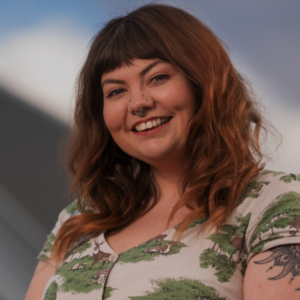 Karlie Alinta Noon is a Gamilaray astrophysicist who is passionate about Indigenous astronomical knowledge and communicating science. She was the first Indigenous female to obtain degrees in physics and mathematics, completed at the University of Newcastle in 2016. She has since completed a master’s degree in astrophysics at the Australian National University in 2019 and became the Sydney Observatory’s first Astronomy Ambassador in 2020. Karlie has also been an Indigenous Heritage Officer at the Department of Agriculture, Water, and the Environment since 2018, helping place Indigenous heritage sites on the National Heritage List. Karlie was an ACT Young Australian of the Year 2019 finalist and a Eureka Prize Emerging Leader 2019 finalist.
Karlie Alinta Noon is a Gamilaray astrophysicist who is passionate about Indigenous astronomical knowledge and communicating science. She was the first Indigenous female to obtain degrees in physics and mathematics, completed at the University of Newcastle in 2016. She has since completed a master’s degree in astrophysics at the Australian National University in 2019 and became the Sydney Observatory’s first Astronomy Ambassador in 2020. Karlie has also been an Indigenous Heritage Officer at the Department of Agriculture, Water, and the Environment since 2018, helping place Indigenous heritage sites on the National Heritage List. Karlie was an ACT Young Australian of the Year 2019 finalist and a Eureka Prize Emerging Leader 2019 finalist.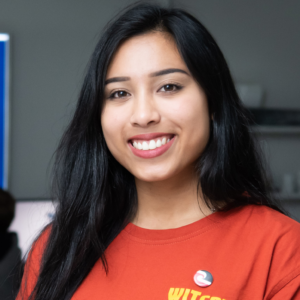 Aleisha Amohia (Te Ātihaunui-a-Papārangi) (she/her) is a passionate young advocate for diversity and inclusion in all spaces, but especially the technology industry. Born and raised in Te Whanganui-a-Tara, Aleisha gets her energy from her supportive whānau and friends, and is driven by the idea of a future where STEM industries care less about innovation for profit, and more about ethical innovation for people and planet.
Aleisha Amohia (Te Ātihaunui-a-Papārangi) (she/her) is a passionate young advocate for diversity and inclusion in all spaces, but especially the technology industry. Born and raised in Te Whanganui-a-Tara, Aleisha gets her energy from her supportive whānau and friends, and is driven by the idea of a future where STEM industries care less about innovation for profit, and more about ethical innovation for people and planet.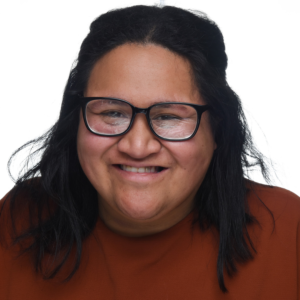 Eteroa Lafaele is a proud Samoan woman born and bred in Cannons Creek, Porirua. She is a STEM ambassador for Maori and Pasifika people in tech.
Eteroa Lafaele is a proud Samoan woman born and bred in Cannons Creek, Porirua. She is a STEM ambassador for Maori and Pasifika people in tech.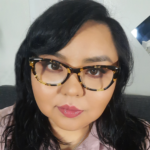
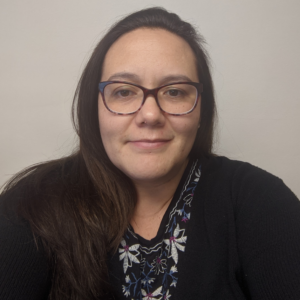
 Originally published in the ebook
Originally published in the ebook